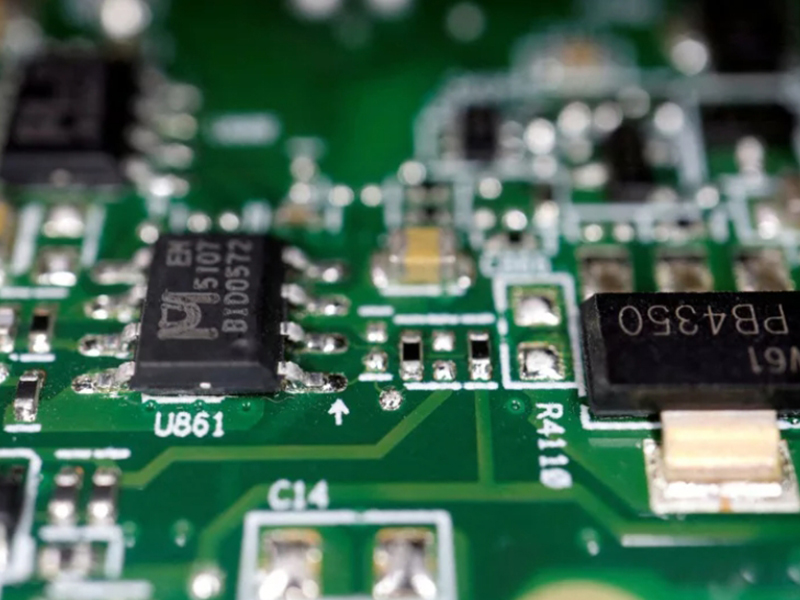
The global PCB community rushes into Thailand to set up 50 factories, and it is estimated that it will become the top four production areas by 2030.

United News Network
July 21, 2024
Author: Economic Daily reporter Yin Huizhong/Taipei Real Time Report
July 21, 2024
Author: Economic Daily reporter Yin Huizhong/Taipei Real Time Report
The global printed circuit board (PCB) community is actively rushing to set up factories in Thailand. According to official Thai statistics, 50 factories will be put into operation locally. The industry estimates that Thailand will become one of the top four production areas as soon as 2030, currently including PCB leader Zhiding (4958), Xinxing (3037), Huatong (2313), Jinxiang Electric (2368) and other Thai factories are scheduled to gradually open production capacity in 2025.
Data from research institutions show that Thailand has leading competitiveness in the region with its relatively mature PCB and downstream electronics industries. In 2023, Thailand's local PCB production output value will account for approximately 3.8% of the world. As the world's major PCB manufacturers continue to deploy locally, the proportion is expected to grow to 4.7% in 2025.
Narit Therdsteerasukdi, secretary-general of Thailand's Board of Investment (BOI), said changing global economic dynamics have led to a shift of major manufacturing bases to Thailand, with Thailand's infrastructure, highly skilled workforce and strong supply chains becoming attractive to global investors. destinations, especially the electronics and PCB industries.
Pithan Ongkosit, Chairman of the Thai Printed Circuit Board Association, emphasized that with the establishment of 50 factories supported by BOI investment, it will help to increase the global PCB output value by 10%, making Thailand the fourth in the world after Taiwan, China, South Korea and Japan. A large PCB producing country, it is expected to create 50,000 to 80,000 jobs.
The printed circuit board industry is actively deploying in Southeast Asia. In addition to major PCB manufacturers actively investing in Thailand, CCL material merchants Lianmao (6213) and Taiyao (6274) and flexible copper foil substrate (FCCL) major Taihong (8039) have been investing in the past three years. It is also actively investing. The Taiwan Circuit Board Association (TPCA) said that many Taiwanese PCB index companies and their supply chains have gone to Thailand to invest and set up factories, and there is a strong demand for all types of talents.
In addition to PCB semiconductor equipment consumables maintenance OEM and other manufacturers are also actively investing. In response to new order demand and geopolitical relations, Jingding plans to invest US$120 million to establish a Thailand factory. Jingding also mentioned that the factory is scheduled to open in late 2025. Production capacity will be opened in half a year.
Taiwanese flexible copper foil substrate leader Taihong previously announced that it would hold an opening ceremony for its Thai factory in AMATA City Chonburi Industrial Estate, Thailand, and would complete formal mass production preparations in the first quarter of 2024. Contribute production capacity to the group. The industry believes that this factory symbolizes the fastest successful case in Thailand in PCB upstream layout.
Southeast Asia is becoming a direct beneficiary of the global PCB and electronics supply chain. According to TPCA analysis, in addition to the advantages of abundant labor and relatively low labor costs in Southeast Asia, geopolitical risks are also extremely limited. Amid the current international tensions, the region has become a popular choice for companies looking for a second production base, which will help promote the development of the local PCB industry.
Although the PCB supply chain in Southeast Asia is still in its early stages of development, TPCA analyzes that manufacturers still face many hidden costs. However, the implementation of the ASEAN Common Tariff Agreement will help improve the regional trade environment and make up for supply chain shortcomings. It is expected that over time, the initial challenges will be gradually overcome, thereby improving overall cost-effectiveness.
Related links: https://udn.com/news/story/7240/8108956
【Disclaimer】
The content of this article only represents the author's personal views and has nothing to do with Creating.
The content, textual description and originality have not been confirmed by this site. This site does not make any guarantee or commitment for this article and all or part of its content, authenticity, completeness, and timeliness. It is for readers' reference only. Please verify the relevant content by yourself.
Creating Nano Technologies, Inc.
59 Alley 21 Lane 279, Chung Cheng Road, Yung Kang City, Tainan, TAIWAN
TEL:886-6-2323927 FAX:886-6-2013306 URL: http://www.creating-nanotech.com
